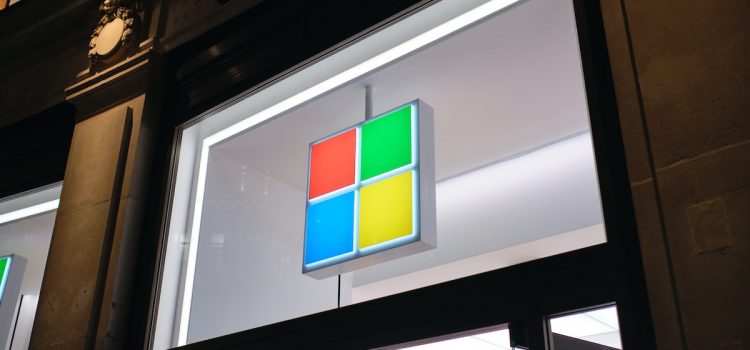

This article is an excerpt from the Shortform book guide to "Hit Refresh" by Satya Nadella. Shortform has the world's best summaries and analyses of books you should be reading.
Like this article? Sign up for a free trial here.
What was Microsoft’s corporate culture like when Satya Nadella became CEO? Specifically, what did he do to improve it?
When Satya Nadella took over as CEO of Microsoft in 2014, he believed that the company had lost its soul and was no longer representative of its original core values. He adopted a four-tiered approach to rejuvenate that soul.
Keep reading to learn how Satya Nadella changed Microsoft’s culture.
Microsoft’s Culture Transformation
Satya Nadella believes that, as CEO, his first and most important job is to foster a good corporate culture. Thus, refreshing corporate culture was at the top of his priority list. Hit Refresh is an account of how Satya Nadella changed Microsoft’s culture to become what it is today.
(Shortform note: Nadella believes that culture is a crucial component of a corporation, but some warn that an overemphasis on culture can be damaging. In Nine Lies About Work, the authors argue that companies might force employees to shed their individuality to conform to and preserve the company culture, ignoring the unique strengths they bring to a company.)
By the time Nadella became Microsoft’s CEO in 2014, the corporate culture had grown toxic. The company had fallen behind its competitors. and its employees were dissatisfied and disillusioned. Surveys revealed that they didn’t feel like Microsoft was going in the right direction. Nadella thus sought to transform the culture into one that would lead to a positive, rejuvenated work environment for all employees.
| Elements of a Strong Corporate Culture Prioritizing culture as Nadella did can lead to a more integrated and satisfied team, better overall communication, and an improved corporate image both internally and externally. If you’re looking for ways to improve your company’s culture, consider addressing the following elements: Involvement. A strong culture is one that encourages the involvement of everyone, from the highest to the lowest ranks. Solicit employee feedback and ideas whenever possible to tap into everyone’s creativity. Values. Make sure that conduct is consistent with the company’s stated values. Senior management should strive to set an example for lower-level employees by modeling ideal behavior. Coherence. Foster clear interdepartmental communication and streamlined work processes to create a coherent and unified whole. Analysis. Take frequent stock of what’s working and what isn’t to make sure your workflow is efficient and that your results are the best they can be. Transparency. Avoid a culture of secrecy by always sharing with your employees what the company’s goals, struggles, and current approaches are. Recognition. Ensure that employees feel appreciated by recognizing achievements and providing bonuses and incentives for those who excel in their roles. Flexibility. Offer flexible work options whenever possible to help accommodate employee preferences and needs, such as remote working or time off for family obligations and personal engagements. Autonomy. Empower your employees by delegating responsibilities to them and giving them autonomy to carry out their tasks. This builds trust between managers and employees to create a healthier workplace dynamic. |
Foundations of the Renewed Microsoft Culture
Nadella transformed Microsoft’s corporate culture by:
Step 1: Speaking and Listening to Employees
Nadella solicited honest feedback through his surveys and meetings, and made an open show of being open-minded and ready to listen. When he witnessed an employee being aggressive or negative toward others, he stepped in and tried to steer the interaction into a more positive direction. He emphasized to employees that change was needed, from top to bottom.
(Shortform note: Nadella puts into practice what Marshall B. Rosenberg describes in Nonviolent Communication, a book that Nadella required managers at Microsoft to read. Rosenberg’s four steps to nonviolent communication are: 1) Observe without evaluating, 2) identify and express your feelings, 3) connect the feelings to your underlying needs, and 4) make specific requests, highlighting what you do want others to do rather than what you don’t want them to do.)
Step 2: Engaging With Senior Managers—and Beyond
Nadella hosted meetings in which senior managers could open up and share more personal experiences and ideas with one another. He also tried to build a context in which they could learn new things together, to foster a sense of momentum and bring them closer to one another as a team.
Beyond getting to know senior managers, Nadella argues that CEOs must remember that they lead an entire company, not just senior management. Thus, a CEO must always stay in touch with the broader base of employees, and they must seek decisions that benefit the company overall and not just one small part of it.
(Shortform note: Nadella practices one of John Maxwell’s 21 Irrefutable Laws of Leadership: Leaders connect with others. Maxwell asserts that leading is more than just giving instructions. It means becoming emotionally engaged with followers so that they’ll be moved to follow you and work hard. He adds that leaders shouldn’t expect their followers to come to them; instead, leaders should initiate contact.)
Step 3: Clearly and Succinctly Defining Microsoft’s Mission
Nadella writes that having a clear mission inspires others and gives them a sense of direction. Before Nadella took over as CEO, the company didn’t have a clear mission—the executive team struggled to explain the corporate strategy to over 100,000 people across more than 190 countries. To get everyone on the same page, Nadella and his team streamlined and defined the company’s mission, worldview, objectives, and culture. The key message: Microsoft’s mission was “to empower every person and every organization on the planet to achieve more.”
(Shortform note: Nadella writes that he received hundreds of positive responses from employees who thought the new mission was inspiring and energizing. However, it wasn’t without its critics: One writer for the Financial Times took aim at the vagueness of the mission, writing, “Achieve more of what?” She argues that Microsoft’s old mission under Bill Gates—“a computer on every desk in every home”—was much more concrete and precise.)
By simplifying the message, they inspired people and enabled them to see how their work fit into the company, fostering a shared sense of purpose.
| How to Create an Effective Mission Statement As Nadella has proven, a clear mission statement can inspire people and get them on the same page. To make your own mission statement, experts recommend that you: 1) Build upon employee and customer feedback. Launch a fact-finding mission to discover how your employees and customers view your company and what they want from you. This can help you better understand what your mission statement needs to zero in on before you begin crafting it. 2) Narrow in on your most important values and goals. Avoid wordiness and vagueness by targeting only what is essential: your most important corporate values and the main missions you have. 3) Be concise and clear. Any kind of insider jargon should be avoided in favor of clear, direct language that anyone can understand. 4) Target your ideal client. Imagine the person you’re trying to reach, and consider what they would need to know in order to understand what you stand for and what you offer, then build your statement around that. 5) Define what makes you unique. Make sure your statement openly defines what makes your company stand out from your competitors. |
Step 4: Encouraging People to Learn Together as Well as Work Together
Nadella believes that team-building exercises and creating an environment in which constant learning is actively encouraged helps bind a team and encourages employee growth. It also contributes to innovation, as we’ll discuss in the next section.
| Benefits of Team-Building Exercises Microsoft has an annual hackathon (to be discussed in the next session), which requires people across different departments to work together. There are many quick and effective team-building exercises you can do to facilitate employee bonding. While team-building exercises can be a lot of fun, they also help employees build valuable workplace skills, including: Better communication and interpersonal awareness. Team-building exercises can be a great way to break the ice for new employees and help established employees get to know one another better. Problem-solving. Exercises that require creative and/or analytical thinking can sharpen problem-solving skills, which in turn can be applied to issues that arise in day-to-day working life. Effective planning and adaptability. Exercises and games that require strategizing and adaptability of approach can help employees with developing more methodical thinking and flexibility. Trust and teamwork. Virtually any exercise you do will help foster trust by encouraging employees to open up to one another and work together in new ways. |
Exercise: Hit Refresh on Your Corporate Culture
With Nadella’s leadership, Microsoft’s culture changed from one of in-fighting and bureaucracy to one of collaboration and innovation.
- Consider the current culture at your company (or within your team). List two to three areas that need improvement. For example, there might be a lack of alignment between departments.
- Which of Nadella’s leadership principles (having empathy, putting your team first, having conviction, thinking long-term and short-term, and not being complacent) can you use to address each area for improvement?
- Describe a specific, immediate action you can take that can help you hit refresh on each area for improvement. For example, to create alignment between departments, you can implement weekly check-in meetings with department heads.

———End of Preview———
Like what you just read? Read the rest of the world's best book summary and analysis of Satya Nadella's "Hit Refresh" at Shortform.
Here's what you'll find in our full Hit Refresh summary:
- How Satya Nadella brought Microsoft back from its decline
- Actionable advice to help you reinvigorate your company
- A look at the ethical responsibilities of tech companies






